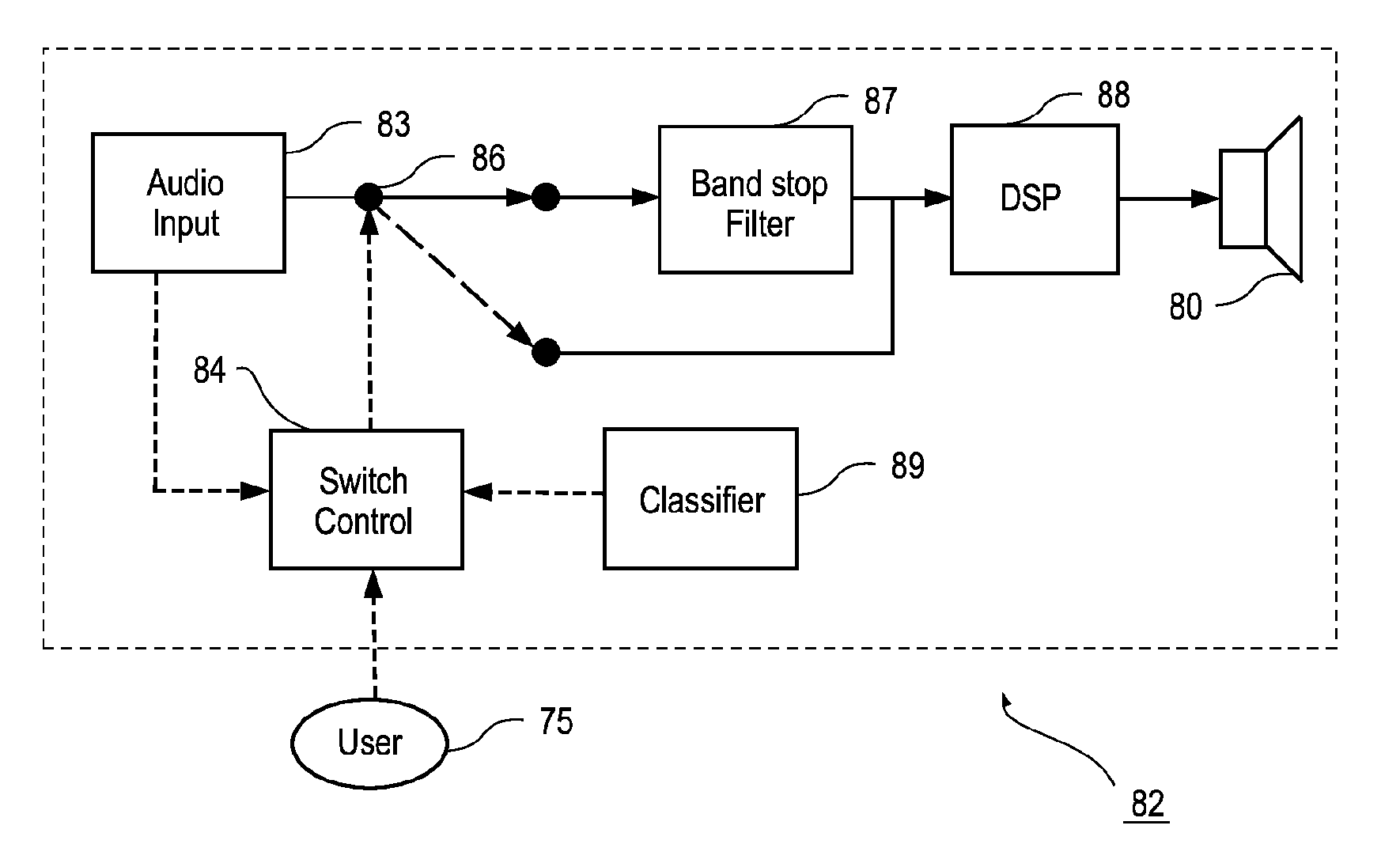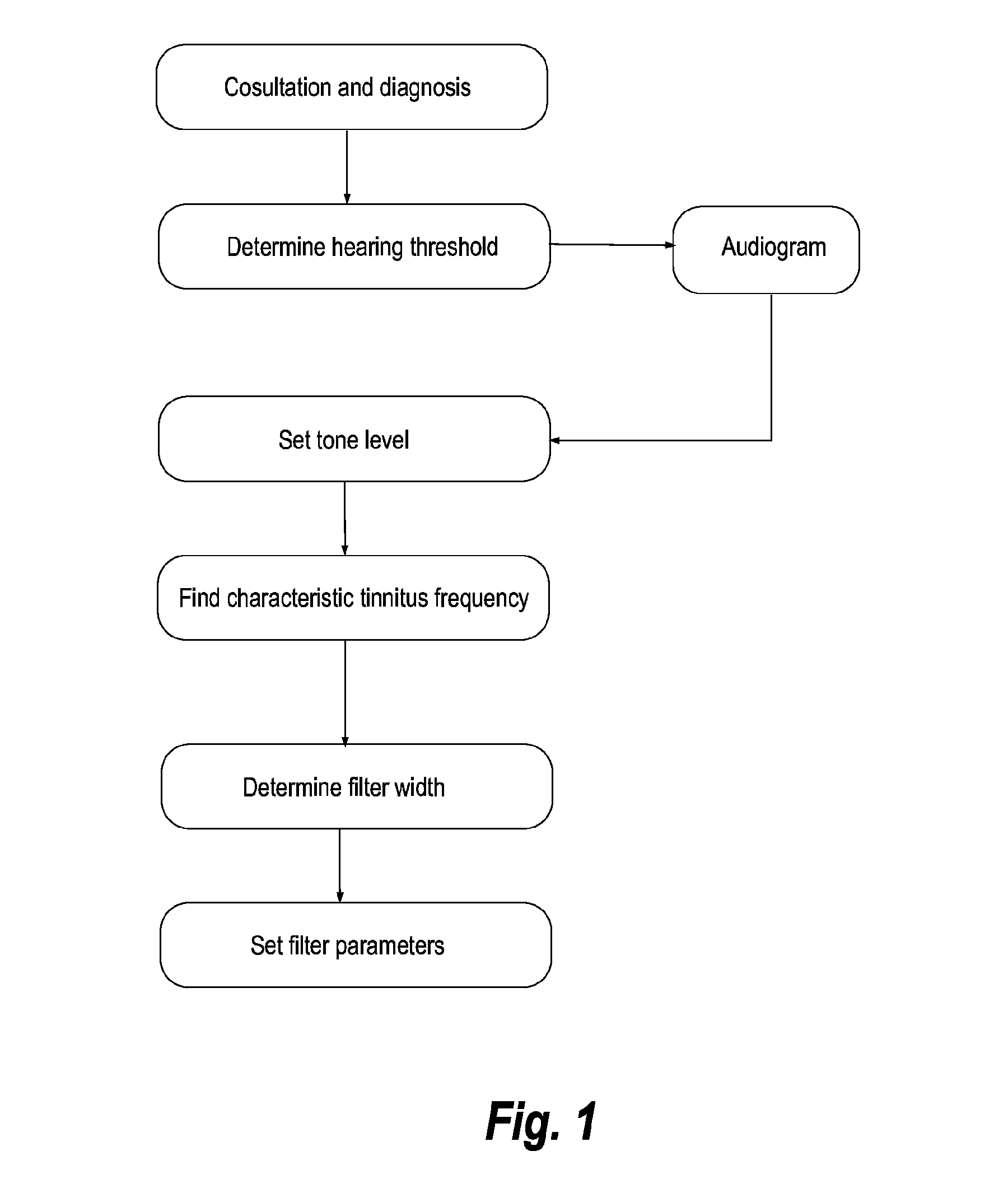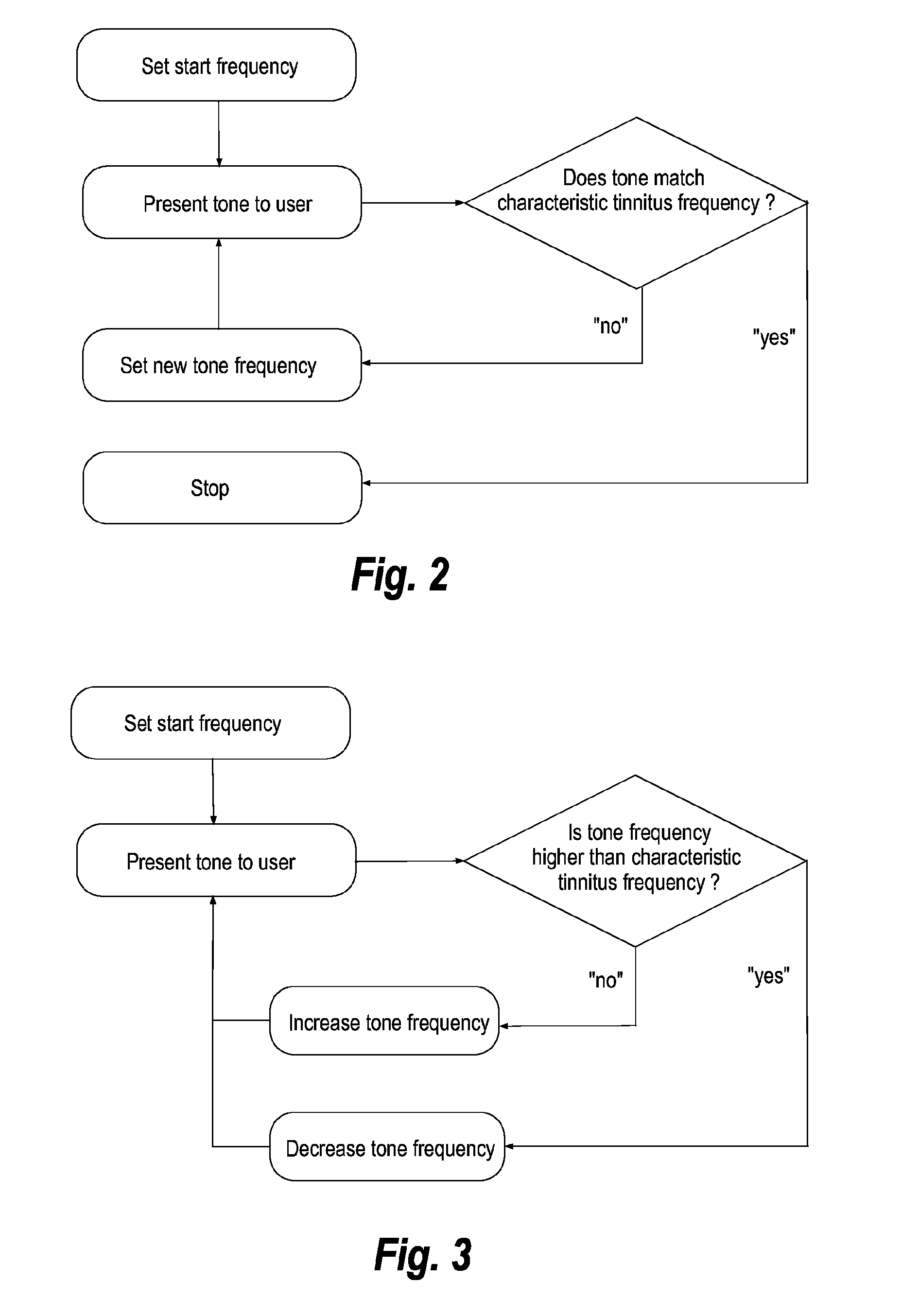Hearing aid and a method for alleviating tinnitus using a notch filter
a notch filter and hearing aid technology, applied in the field of hearing aids, can solve the problems of insufficient suppression of tinnitus, cumbersome exploitation of the advantages of using the matching procedure outside the laboratory, and inconvenient size, so as to achieve the effect of reducing the cost of complex equipmen
- Summary
- Abstract
- Description
- Claims
- Application Information
AI Technical Summary
Benefits of technology
Problems solved by technology
Method used
Image
Examples
first embodiment
[0123]FIG. 8 shows highly schematically selected parts of a hearing aid according to the second aspect of the invention. The hearing aid 82 comprises an audio input 83 providing an audio signal, a digital signal processing unit (DSP) 88, an output transducer shown as a speaker 80, and a band stop filter 87.
[0124]The audio signals provided by the audio input 83 may be generated internally in the hearing aid or be generated externally and transmitted to and reproduced by the hearing aid. Fractal music may be generated internally in the hearing aid or the audio signals may be transmitted from an external unit such as a computer, television or mp3 player and to the hearing aid using e.g. telecoils or wireless data links, or the hearing aid may be operated in standard mode with the microphone providing the audio signals from the surroundings. Preferably, the audio signals are normal music or fractal music, as the latter type of music may be particularly useful for alleviating tinnitus wh...
second embodiment
[0127]FIG. 9 shows highly schematically selected parts of a hearing aid according to the second aspect of the invention. The hearing aid 92 may in addition to the components shown in FIG. 9 comprise any of the components described above in connection with FIG. 8.
[0128]The hearing aid 92 further comprises a filter control means 94 for controlling an adaptation of said band stop filter in response to a registered change in the perceived strength of the tinnitus, and a tinnitus monitoring means 99 for monitoring the strength of the perceived tinnitus. The filter control means 94 may comprise a classifier and it may be a part of the DSP 98.
[0129]The tinnitus monitoring means 99 preferably registers changes in the strength of the perceived tinnitus based on measurements of an Auditory Steady-State Response (ASSR) of the user 75. The ASSR is preferably measured by means of EEG or MEG. The tinnitus monitoring means 99 preferably comprises electrodes adapted for detecting brain signals, suc...
third embodiment
[0131]FIG. 10 shows highly schematically selected parts of a hearing aid according to the second aspect of the invention. The hearing aid 102 comprises an audio input 83 providing an audio signal, a band stop filter 87, a DSP 108, a speaker 80 and a transposer 110. The audio signal is fed to the band stop filter 87 and to the input of the transposer 110. Hereby the band stop filter 87 removes a certain band of frequencies from the audio signal to create a band stop filtered audio signal, and the transposer 110 transposes that same band of frequencies in the audio signal to create a frequency transposed audio signal. The band stop filtered audio signal and the frequency transposed audio signal are fed to the DSP 108, where the signals are added and further processed. Hereby it becomes possible to have the band stop filter switched into the hearing aid signal path, even in the presence of speech, without compromising speech intelligibility too much if at all.
[0132]The hearing aid 102 ...
PUM
 Login to View More
Login to View More Abstract
Description
Claims
Application Information
 Login to View More
Login to View More - R&D
- Intellectual Property
- Life Sciences
- Materials
- Tech Scout
- Unparalleled Data Quality
- Higher Quality Content
- 60% Fewer Hallucinations
Browse by: Latest US Patents, China's latest patents, Technical Efficacy Thesaurus, Application Domain, Technology Topic, Popular Technical Reports.
© 2025 PatSnap. All rights reserved.Legal|Privacy policy|Modern Slavery Act Transparency Statement|Sitemap|About US| Contact US: help@patsnap.com



